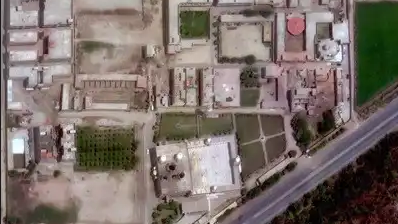Satellite images from May 10, 2025, reveal significant damage at several Pakistani military air bases after India launched targeted strikes in Operation Sindoor. The strikes, which followed three days of escalating hostilities, appear to have rattled Pakistan, prompting its government to seek a ceasefire.
Pakistan’s Key Air Bases Suffer Devastating Strikes
India’s precision missile strikes on May 8-10, 2025, targeted 11 of Pakistan’s military air bases, leaving extensive damage at several key locations. The strikes, which aimed to disrupt Pakistan’s military infrastructure, hit bases in Sukkur, Rawalpindi, Rahim Yar Khan, Sargodha, Jacobabad, and Bholari, among others. The satellite images released by Maxar Technologies show substantial destruction, especially to runways and hangars.
The strikes came after Pakistan launched multiple drone attacks on Indian border states, escalating the conflict between the two nations. India’s military retaliation was swift and precise, with many bases suffering significant damage, including vital radar sites in Pasrur and Sialkot.
Strategic Importance of the Targeted Air Bases
Each of the targeted air bases has strategic importance in Pakistan’s defense infrastructure. Sukkur Air Base, located in Sindh, is crucial for air operations in the region and houses advanced fighter jets such as the F-16 and J-17. The base’s location is vital for Pakistan’s defense along the coastlines, particularly in Karachi.

Detailed Damage Across Pakistan’s Air Bases
The satellite images captured by Maxar Technologies show the aftermath of the strikes at several important air bases:
-
Sukkur Air Base: The damage at Sukkur was extensive, with the runway and hangars suffering considerable destruction. Sukkur serves as a forward operational base, housing key aircraft used in the defense of Karachi.
-
Nur Khan Air Base: Located near Islamabad, Nur Khan is one of Pakistan’s most vital air bases, housing VIP aircraft for the country’s leadership. It is also home to airborne early warning systems and serves as the air mobility command center. The attack triggered panic within Pakistan’s leadership circles.
-
Rahim Yar Khan Air Base: The runway at this air base was completely damaged, with a massive crater forcing a suspension of operations for a week. Rahim Yar Khan is a critical base for rapid deployment and drone operations.
-
Mushaf Air Base in Sargodha: This base is home to Pakistan’s most advanced aircraft, including the F-16 and Mirage 5 fighters. The attack on the runway here severely hindered operations at the airbase, a significant strategic asset in Pakistan’s defense.
-
Jacobabad Air Base: Located near the western border, Jacobabad has been a strategic base, especially after its use by U.S. and NATO forces. The airbase houses some of Pakistan’s most advanced aircraft, and the damage here has set back Pakistan’s military capabilities.
-
Bholari Air Base: Bholari, one of Pakistan’s most modern air bases, was operationalized only in 2017. The strike here left significant damage to runways and fighter jet hangars, further crippling Pakistan’s air combat capabilities.
The Immediate Consequences of the Attacks
These strikes were not just about destroying infrastructure but also sending a strong message about India’s resolve. The air bases targeted by India were essential for the Pakistani Air Force’s operations, and their incapacitation has disrupted Pakistan’s military readiness. The damage to these vital facilities has forced the Pakistani military to reconsider its position.
Pakistan’s government, led by Prime Minister Shehbaz Sharif, reportedly initiated talks for a ceasefire shortly after the strikes, recognizing the scale of the damage and the shifting balance of power in the region. According to sources close to the Pakistani administration, the government was under intense pressure, not only from the military but also from the public and international community.
Impact on Pakistan’s Defense Strategy
The damage to these air bases has crippled Pakistan’s ability to project air power effectively in the region. With critical military infrastructure out of action, Pakistan’s defense capabilities have been significantly reduced. The targeted airbases were key to the rapid deployment of fighter jets and drone operations, which are integral to Pakistan’s defense strategy.
While the Pakistani military is working to restore the damaged facilities, it will take weeks, if not months, to repair the extensive damage. This could severely hinder Pakistan’s readiness for any further escalation of hostilities, which may be why the Pakistani government moved swiftly to negotiate a ceasefire with India.
Pakistan’s Response and Ceasefire Negotiations
The strikes came as a direct response to Pakistan’s attempted drone strikes on Indian soil, which had intensified tensions between the two countries. In the aftermath of the missile attacks, Pakistan’s leadership reached out to India, signaling a willingness to de-escalate the situation.
As of May 13, 2025, reports indicated that a ceasefire had been agreed upon, with both nations calling for a halt to further hostilities. The ceasefire followed a period of heightened tensions that saw more than 26 drone incursions from Pakistan into Indian territory.
This sudden shift in approach underscores the importance of international diplomacy in preventing further escalation. However, it remains unclear how long the ceasefire will hold, especially as the damage to Pakistan’s military infrastructure remains significant.
